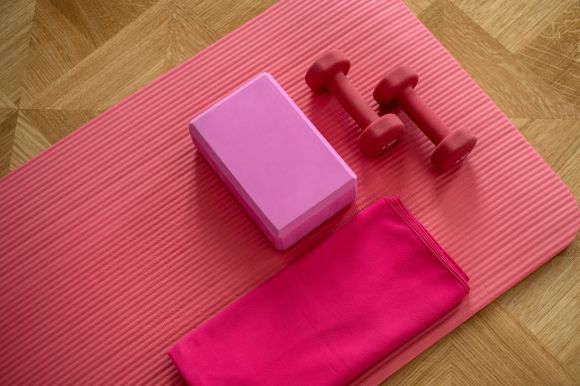Strength training is a great way to build muscle, increase endurance, and improve overall fitness. However, many people who engage in strength training eventually hit a plateau, where their progress stagnates and they struggle to see further improvements. Plateaus can be frustrating and demotivating, but they are not inevitable. With the right approach, it is possible to prevent strength training plateaus and continue making gains. In this article, we will explore some effective strategies to keep your strength training progress on track.
Blog Posts
Stretching is often overlooked as a part of a fitness routine, but it is a crucial component that should not be neglected. Incorporating regular stretching into your exercise regimen can offer a multitude of benefits for your body and mind. Whether you are an athlete, a fitness enthusiast, or simply someone looking to improve their overall health, stretching should be an essential part of your routine. In this article, we will explore the many benefits of regular stretching and why you should make it a priority in your daily life.
Increased Flexibility
One of the most obvious benefits of regular stretching is improved flexibility. Flexibility is defined as the range of motion of your joints and muscles. By regularly stretching, you can increase your flexibility, allowing you to move more freely and with greater ease. Increased flexibility can also help prevent injuries, as flexible muscles and joints are less prone to strains and sprains.Improved Posture
Sitting for long periods and staring at screens has become the norm in today's society. Unfortunately, this sedentary lifestyle often leads to poor posture and muscular imbalances. Regular stretching can help counteract these negative effects by lengthening tight muscles and strengthening weak ones. By improving your posture, you can alleviate chronic pain and reduce the risk of developing musculoskeletal problems later in life.Enhanced Athletic Performance
Whether you are a professional athlete or simply engaging in recreational activities, regular stretching can greatly enhance your athletic performance. By improving flexibility, stretching allows for a wider range of motion, which translates to better performance in various sports and activities. Additionally, stretching helps to warm up your muscles, preparing them for the demands of physical activity and reducing the risk of injury.Stress Relief
In our fast-paced world, stress has become an all-too-common occurrence. Regular stretching can help alleviate stress by promoting relaxation and increasing blood flow to the muscles. Stretching also activates the parasympathetic nervous system, which is responsible for the body's rest and digest response. This can help reduce anxiety and promote a sense of calmness and well-being.Improved Circulation
Stretching encourages blood flow to the muscles, which in turn improves circulation throughout the body. This increased blood flow delivers essential nutrients and oxygen to the muscles, helping them function optimally. Improved circulation can also aid in the removal of waste products, such as lactic acid, which can build up in muscles during exercise.Reduced Muscle Soreness
After a challenging workout, muscle soreness is a common occurrence. However, regular stretching can help reduce post-workout muscle soreness. Stretching helps to lengthen and relax the muscles, promoting faster recovery and reducing the intensity of muscle soreness.Injury Prevention
One of the most significant benefits of regular stretching is its ability to prevent injuries. By improving flexibility, stretching allows your muscles and joints to move more freely, reducing the risk of strains and sprains. Additionally, stretching helps to improve the overall health of your muscles, tendons, and ligaments, making them more resilient to injury. In conclusion, regular stretching offers a wide range of benefits for both the body and mind. From increased flexibility and improved posture to enhanced athletic performance and stress relief, incorporating stretching into your daily routine is a simple yet effective way to improve your overall well-being. So, make sure to take a few minutes each day to stretch and reap the many rewards it has to offer. Your body will thank you!
Finding meals that please every member of the family can be a challenge. With different tastes, preferences, and dietary restrictions, it can be difficult to come up with dishes that everyone will enjoy. However, with a little planning and creativity, it is possible to cook meals that will satisfy even the pickiest eaters. Here are some tips for cooking meals the whole family will love.
Plan Ahead
One of the keys to cooking meals that the whole family will love is to plan ahead. Take some time each week to sit down and plan out your meals. Consider the preferences and dietary restrictions of each family member, and come up with a menu that incorporates everyone's needs. This will not only make your grocery shopping more efficient, but it will also ensure that you have all the ingredients you need to prepare the meals.Variety is Key
No one wants to eat the same thing every day, so it's important to incorporate variety into your family meals. Try to include a mix of different proteins, such as chicken, beef, and fish, as well as a variety of vegetables and grains. This will not only keep your family interested in the meals, but it will also ensure that they are getting a balanced and nutritious diet.Get the Kids Involved
Getting your kids involved in meal planning and preparation can make them more excited about the food that is being served. Let them help pick out recipes, go grocery shopping with you, and even assist in the cooking process. Not only will this give them a sense of ownership over the meals, but it will also teach them valuable cooking skills that they can carry with them into adulthood.Experiment with Flavors
Don't be afraid to experiment with flavors when cooking for your family. Try out new spices, herbs, and sauces to give your meals a unique twist. This will not only add excitement to the dinner table, but it will also introduce your family to new flavors and cuisines. You never know, you might discover a new family favorite!Make it Fun
Making mealtime fun can go a long way in ensuring that the whole family enjoys the food. Consider having themed dinner nights, where you serve dishes from different cultures or cuisines. You can also try out new cooking techniques, such as grilling or baking, to add a fun twist to your meals. Additionally, involving your family in setting the table and creating a welcoming atmosphere can make mealtime a more enjoyable experience for everyone.Listen to Feedback
Lastly, it's important to listen to feedback from your family members. If a certain dish didn't go over well, take note of it and make adjustments for the future. Ask your family for their input on what they enjoyed and what they would like to see more of. This will not only help you improve your cooking skills, but it will also show your family that their opinions are valued. In conclusion, cooking meals that the whole family will love is possible with a little planning, creativity, and flexibility. By incorporating variety, getting the kids involved, experimenting with flavors, making it fun, and listening to feedback, you can create meals that will satisfy everyone's tastes and preferences. So, the next time you're in the kitchen, keep these tips in mind and get ready to wow your family with delicious and enjoyable meals.
Introduction:
Maintaining good digestive health is essential for overall well-being. An often overlooked aspect of digestion is the role that cardiovascular exercise can play in promoting a healthy gut. While most people associate cardio workouts with weight loss or cardiovascular health, they may not realize the benefits it can have on digestion. In this article, we will explore how cardiovascular exercises can improve digestion and promote gut health.
The Gut-Exercise Connection:
The gut, also known as the gastrointestinal tract, plays a vital role in the digestion and absorption of nutrients. A well-functioning gut ensures that food is broken down properly and nutrients are efficiently absorbed, leading to better overall health. Regular exercise, particularly cardiovascular exercises, can have a positive impact on the gut.
Increased Blood Flow:
One of the key benefits of cardiovascular exercises is the increase in blood flow throughout the body. This increased blood flow also extends to the digestive system, supplying it with oxygen and nutrients needed for optimal function. Improved blood flow can enhance the efficiency of digestion and nutrient absorption, leading to better gut health.
Stimulates Bowel Movements:
Cardio exercises can help stimulate bowel movements, preventing constipation and promoting regularity. The rhythmic movements involved in activities such as running or cycling can help stimulate the muscles of the digestive tract, aiding in the movement of waste through the intestines. Regular bowel movements are essential for maintaining a healthy gut.
Reduces Stress:
Stress can have a detrimental effect on digestion. It can disrupt the balance of bacteria in the gut and lead to digestive issues such as bloating, cramping, and diarrhea. Cardio exercises are known to reduce stress levels by releasing endorphins, the feel-good hormones. By reducing stress, cardiovascular exercises indirectly promote better digestion and gut health.
Improves Gut Microbiota:
The gut is home to trillions of bacteria that make up the gut microbiota. These bacteria play a crucial role in digestion and overall health. Studies have shown that regular exercise can positively influence the composition and diversity of gut microbiota. Cardio exercises help promote the growth of beneficial bacteria while reducing the presence of harmful bacteria, leading to a healthier gut environment.
Enhances Metabolism:
Cardiovascular exercises can boost metabolism, which is the rate at which the body burns calories. A faster metabolism means that food is processed more efficiently, allowing for better digestion and absorption of nutrients. This improved metabolism can also aid in weight management, which is essential for maintaining a healthy gut.
Tips for incorporating Cardiovascular Exercises into your Routine:
1. Start Slow: If you are new to cardiovascular exercises, start with low-impact activities such as walking or swimming. Gradually increase the intensity and duration of your workouts as your fitness level improves.
2. Find an Activity you Enjoy: Choose a cardiovascular exercise that you enjoy doing. Whether it's dancing, cycling, or playing a sport, finding an activity you love will make it easier to stick to your routine.
3. Aim for Regular Exercise: Aim for at least 150 minutes of moderate-intensity cardio exercises per week, or 75 minutes of vigorous-intensity exercises. Breaking it down into smaller sessions throughout the week can make it more manageable.
4. Stay Hydrated: Proper hydration is essential for digestion and overall health. Drink plenty of water before, during, and after your workouts to stay hydrated.
Conclusion:
Cardiovascular exercises offer numerous benefits for improving digestion and promoting gut health. By increasing blood flow, stimulating bowel movements, reducing stress, improving gut microbiota, and enhancing metabolism, cardio workouts can have a positive impact on digestive function. Incorporating regular cardiovascular exercises into your routine, along with a healthy diet, can lead to better digestion and improved overall gut health. So lace up your sneakers and get moving for a healthier gut!
In the world of sports, athletes are constantly striving to improve their performance. While general fitness and strength training are essential components of any training program, sports-specific training takes things a step further. It involves tailoring exercises and drills to mimic the movements and demands of a particular sport, allowing athletes to excel in their chosen field. Whether you're a seasoned athlete or a beginner looking to improve, mastering sports-specific training can take your skills to the next level.
Understanding the Importance of Sports-specific Training
Sports-specific training is crucial for athletes looking to excel in their chosen sport. While general fitness training improves overall strength and conditioning, it may not address the specific skills and movements required for a particular sport. By incorporating sports-specific training into their routine, athletes can enhance their performance and reduce the risk of injury.Breaking Down the Movements
To effectively train for a specific sport, it's important to break down the movements involved. For example, if you're a basketball player, you'll want to focus on exercises that improve your agility, jumping ability, and hand-eye coordination. By identifying the key movements and skills required for your sport, you can design a training program that targets these areas.The Importance of Functional Training
Functional training is a key component of sports-specific training. Unlike traditional weightlifting exercises that isolate individual muscles, functional training focuses on movements that mimic those used in your sport. This type of training not only improves your overall strength but also enhances your coordination and balance. For example, a soccer player might incorporate exercises that involve kicking, passing, and changing direction quickly.Building Strength and Power
In many sports, strength and power are essential for success. Sports-specific training can help athletes build the strength and power needed to excel in their sport. By incorporating exercises that target the specific muscle groups used in your sport, you can improve your performance on the field or court. For example, a tennis player might focus on exercises that strengthen the muscles used in their serve.Improving Speed and Agility
Speed and agility are crucial in many sports, and sports-specific training can help athletes improve these skills. By incorporating drills that focus on speed and agility, athletes can improve their reaction time, acceleration, and change of direction. For example, a football player might incorporate ladder drills and cone drills into their training routine to improve their agility on the field.Enhancing Endurance
Endurance is another important aspect of sports-specific training. Depending on the demands of your sport, you may need to have the stamina to sustain high-intensity efforts for extended periods of time. By incorporating aerobic and anaerobic exercises into your training routine, you can improve your endurance and stay at the top of your game.Putting It All Together
To master sports-specific training, it's important to have a well-rounded training program that incorporates a variety of exercises and drills. By focusing on the specific skills and movements required for your sport, you can enhance your performance and take your skills to the next level. Remember to also include rest and recovery in your training routine to avoid overtraining and reduce the risk of injury. In conclusion, sports-specific training is a vital component of any athlete's training program. By tailoring exercises and drills to mimic the movements and demands of your sport, you can enhance your performance and reduce the risk of injury. Whether you're a beginner or a seasoned athlete, mastering sports-specific training can take your skills to new heights. So, get out there, put in the work, and become the best athlete you can be.
Sports-specific training is a key component of any athlete's training regimen. It involves tailoring exercises and workouts to mimic the movements and demands of a particular sport. By focusing on the specific skills and physical requirements needed for a sport, athletes can improve their performance and reduce the risk of injury. In this article, we will explore the benefits of sports-specific training and provide tips on how to incorporate it into your training routine.
Enhanced Performance
One of the main benefits of sports-specific training is the improvement in performance it offers. By targeting the specific movements and skills required for your sport, you can develop the strength, speed, agility, and endurance needed to excel on the field or court. For example, a baseball player might focus on exercises that improve their throwing accuracy and power, while a basketball player might prioritize drills that enhance their vertical jump and quickness.Reduced Risk of Injury
Sports-specific training also helps to reduce the risk of injury. By training the body to be more resilient and adaptable to the demands of a particular sport, athletes can minimize the likelihood of strains, sprains, and other common injuries. For instance, a soccer player might work on exercises that strengthen the muscles around their knees and ankles to prevent ligament tears or twists.Improved Movement Efficiency
Another advantage of sports-specific training is the development of movement efficiency. By honing in on the specific movements and techniques required for your sport, you can improve your body's biomechanics, making your movements more efficient and effective. This can lead to improved speed, agility, and overall performance. A swimmer, for example, might focus on drills that enhance their stroke technique and streamline their body position in the water.Optimal Conditioning
Sports-specific training also allows athletes to achieve optimal conditioning for their sport. By tailoring workouts to replicate the intensity and duration of competition, athletes can improve their cardiovascular fitness and endurance. This is particularly important for sports that involve prolonged periods of high-intensity activity, such as long-distance running or cycling. By simulating the demands of the sport in training, athletes can ensure they are prepared to perform at their best when it matters most.Incorporating Sports-specific Training into Your Routine
Now that you understand the benefits of sports-specific training, let's discuss how to incorporate it into your training routine. 1. Identify the Key Skills: Start by identifying the key skills and movements required for your sport. This could be anything from shooting accuracy to lateral agility. 2. Design Targeted Workouts: Once you have identified the key skills, design workouts that specifically target those areas. For example, if you are a tennis player looking to improve your serve, incorporate exercises that strengthen your shoulder and core muscles. 3. Focus on Technique: Technique is crucial in sports-specific training. Pay close attention to your form and technique during exercises and drills to ensure you are executing them correctly. 4. Progression and Variation: As you become more proficient in your sport, progressively increase the difficulty of your sports-specific training. Incorporate variations of exercises and drills to continually challenge your body and prevent plateaus. 5. Recovery and Rest: Don't forget the importance of recovery and rest. Sports-specific training can be intense, so make sure to incorporate rest days into your routine to allow your body to recover and repair. In conclusion, sports-specific training is essential for athletes looking to master their sport. By targeting the specific skills, movements, and physical demands required for a particular sport, athletes can enhance their performance, reduce the risk of injury, improve movement efficiency, and achieve optimal conditioning. So, whether you're a soccer player, basketball player, or swimmer, make sports-specific training a priority in your training routine and watch your performance soar to new heights.
In today's fast-paced world, finding time for relaxation and self-care can be challenging. However, incorporating meditation into your daily routine can provide numerous benefits for your mental, emotional, and physical well-being. Meditation allows you to quiet your mind, reduce stress, and increase focus and clarity. If you're unsure about how to get started, here are some helpful tips on how to incorporate meditation into your daily routine.
Create a Peaceful Environment
Before you begin your meditation practice, it's essential to create a peaceful environment. Find a quiet space in your home where you can be alone and free from distractions. You can decorate this space with calming elements like candles, plants, or soft lighting to create a serene ambiance. Additionally, consider using cushions or a comfortable chair to support your posture during meditation.Start with Short Sessions
When starting your meditation practice, it's best to begin with short sessions and gradually increase the duration over time. Start with just five minutes of meditation each day and gradually work your way up to longer sessions. This will help you build consistency and prevent feelings of overwhelm or frustration. Remember, the goal is to establish a sustainable daily practice.Choose a Meditation Technique
There are various meditation techniques to choose from, so it's essential to find one that resonates with you. Some popular meditation techniques include mindfulness meditation, loving-kindness meditation, and transcendental meditation. Experiment with different techniques and find the one that feels most comfortable and effective for you. You can also explore guided meditation apps or online resources to help you get started.Find a Convenient Time
Finding a convenient time to meditate is crucial for establishing a consistent practice. Choose a time of day when you're least likely to be interrupted or distracted. Many people find that meditating in the morning before starting their day is beneficial as it sets a positive tone for the rest of the day. However, if mornings are not feasible, any time of day that works for you is perfectly fine. The key is to find a time that you can commit to consistently.Integrate Meditation into Your Daily Routine
To make meditation a habit, it's essential to integrate it into your daily routine. Treat it like any other essential activity in your day, such as brushing your teeth or eating breakfast. Set a reminder on your phone or create a schedule to ensure you prioritize meditation each day. By incorporating it into your routine, you're more likely to stick with it and experience its benefits.Be Consistent
Consistency is key when it comes to meditation. Aim to meditate every day, even if it's just for a few minutes. Consistency helps train your mind and allows you to deepen your practice over time. Remember, it's not about perfection or achieving a particular outcome; it's about showing up and being present in the moment.Be Gentle with Yourself
As you begin your meditation practice, it's important to be gentle with yourself. Meditation is a skill that takes time to develop, and it's normal to experience distractions or racing thoughts during your sessions. Instead of getting frustrated, acknowledge these thoughts, and gently bring your focus back to your breath or chosen point of focus. Be patient with yourself and trust that with time and practice, meditation will become more natural and effortless. Incorporating meditation into your daily routine can have a profound impact on your overall well-being. By creating a peaceful environment, starting with short sessions, choosing a technique that resonates with you, finding a convenient time, integrating it into your routine, being consistent, and being gentle with yourself, you can establish a sustainable and fulfilling meditation practice. So, take a deep breath, find a quiet space, and begin your journey towards a calmer mind and a more peaceful life.
Cardiovascular exercises, also known as cardio exercises, are essential for maintaining a healthy heart and overall fitness. Incorporating these exercises into your daily routine can bring numerous benefits, including improved endurance, weight management, and stress reduction. However, finding the time and motivation to engage in cardio exercises can be challenging. Fortunately, with a little planning and creativity, you can easily include cardio exercises into your daily routine without disrupting your schedule.
1. Start Your Day with a Morning Walk
One of the easiest ways to incorporate cardio exercises into your daily routine is to start your day with a brisk morning walk. Set your alarm a little earlier and take a 20-30 minute walk around your neighborhood. Not only will this get your heart pumping, but it will also invigorate your mind and prepare you for the day ahead.2. Take the Stairs
Instead of relying on elevators or escalators, make it a habit to take the stairs whenever possible. Climbing stairs is an excellent cardio exercise that engages multiple muscle groups and increases your heart rate. Whether you're at work, in a shopping mall, or at home, opt for the stairs and reap the cardiovascular benefits.3. Incorporate Cardio into Your Commute
If you typically commute to work or school using public transportation, consider adding some cardio into your journey. Get off a few stops earlier and walk the remaining distance. Alternatively, if you live close enough, consider biking or jogging to your destination. Not only will this save you money on transportation, but it will also provide you with a daily dose of exercise.4. Make Use of Breaks and Lunch Hours
Instead of sitting at your desk during breaks or lunch hours, make use of this time to engage in quick cardio exercises. Go for a brisk walk around the office building or nearby park, do a few sets of jumping jacks or high knees, or find a quiet space to do some yoga or stretching. These short bursts of cardio can help boost your energy levels and productivity throughout the day.5. Incorporate Cardio into Household Chores
Household chores are often seen as mundane tasks, but they can also be an opportunity to get your heart rate up. Engage in activities such as vacuuming, mopping, or gardening at a faster pace to turn them into cardio exercises. You can also try incorporating squats or lunges while doing chores to engage your leg muscles and increase the intensity.6. Incorporate Cardio into Family Activities
Spending quality time with your family doesn't have to mean sacrificing your cardio routine. Look for activities that the whole family can enjoy while getting their hearts pumping. Go for a bike ride, play a game of tag, or have a dance party in your living room. By involving your loved ones, you not only make exercise more enjoyable but also encourage healthy habits in those around you.7. Find Activities You Enjoy
Lastly, the key to incorporating cardio exercises into your daily routine is to find activities that you genuinely enjoy. Whether it's swimming, dancing, kickboxing, or playing a sport, find something that excites you and makes you look forward to exercising. When you enjoy what you're doing, it becomes easier to stay consistent and make cardio a regular part of your life. In conclusion, incorporating cardio exercises into your daily routine doesn't have to be a daunting task. By making small adjustments and finding creative ways to engage in cardio activities, you can reap the numerous benefits of cardiovascular exercise without disrupting your schedule. Start by taking a morning walk, taking the stairs, or incorporating cardio into your commute. Make use of breaks and lunch hours, turn household chores into cardio exercises, and involve your family in physical activities. Most importantly, find an activity you enjoy to make cardio a sustainable and enjoyable part of your life.
In the pursuit of a healthier lifestyle, losing weight is often a common goal. Not only does shedding those extra pounds improve our physical appearance, but it also has numerous health benefits. Fit on, a revolutionary fitness app, is here to help you achieve your weight loss goals while improving your overall well-being.
1. A Personalized Approach
One of the key features of Fit on is its ability to provide a personalized approach to weight loss. Upon signing up, the app prompts you to input important information such as your current weight, height, age, and fitness level. Using this data, Fit on creates a tailored fitness plan that suits your specific needs and goals.2. Customized Workout Routines
Gone are the days of aimlessly wandering around the gym unsure of what exercises to do. Fit on offers a wide variety of workout routines that are designed to target different muscle groups and burn calories effectively. Whether you prefer cardio, strength training, or a combination of both, you'll find a workout routine that suits your preferences and fitness level.3. Nutritional Guidance
Exercise alone is not enough to achieve significant weight loss. A well-balanced diet is also crucial. Fit on provides users with nutritional guidance, offering meal plans and recipes that are not only healthy but also delicious. With the app's help, you can easily track your calorie intake and make informed food choices.4. Progress Tracking
Keeping track of your progress is essential for staying motivated on your weight loss journey. Fit on allows you to monitor your progress by tracking your weight, body measurements, and even your workouts. Seeing the numbers change over time can be incredibly empowering and serves as a reminder of how far you've come.5. Community Support
Embarking on a weight loss journey can be challenging, but with Fit on, you're never alone. The app provides a supportive community where you can connect with like-minded individuals who are also working towards their fitness goals. Share your progress, seek advice, and celebrate each other's achievements. The Fit on community is a source of inspiration and encouragement.6. Mindfulness and Mental Health
Achieving a healthy body goes beyond physical fitness; it also involves taking care of your mental well-being. Fit on incorporates mindfulness techniques into its platform, offering guided meditations and stress-relieving exercises. By addressing the mind-body connection, the app promotes a holistic approach to health.7. Long-Term Sustainability
Many weight loss programs promise quick results but often fail to provide sustainable solutions. Fit on focuses on long-term sustainability, encouraging healthy habits that can be maintained even after reaching your weight loss goals. By adopting a balanced approach to fitness and nutrition, you can ensure that your efforts yield lasting results. In conclusion, Fit on is an all-in-one fitness app that can help you lose weight and improve your health. With its personalized approach, customized workout routines, nutritional guidance, progress tracking, community support, mindfulness techniques, and emphasis on long-term sustainability, Fit on provides the tools and support you need to achieve your weight loss goals. Download the app today and start your journey towards a healthier, happier you.
In today's fast-paced world, finding time to exercise can be a challenge. However, staying fit and active is vital for our physical and mental well-being. The good news is that you don't need a gym membership or fancy equipment to achieve this. With a little creativity and motivation, you can stay fit and active right in the comfort of your own home.









